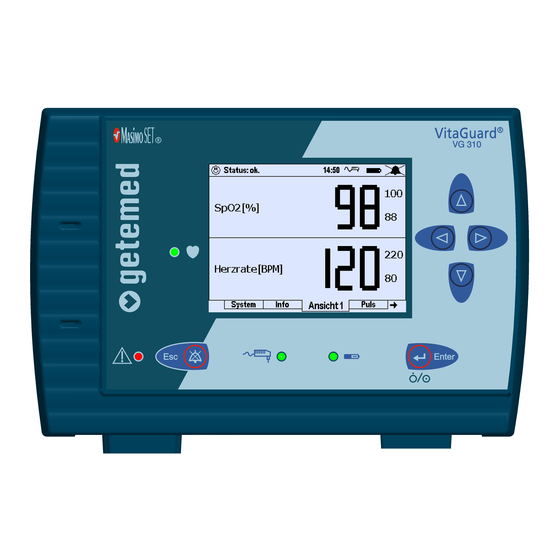
getemed VitaGuard VG310 Pulse Oximeter Manuals
Manuals and User Guides for getemed VitaGuard VG310 Pulse Oximeter. We have 2 getemed VitaGuard VG310 Pulse Oximeter manuals available for free PDF download: Operating Instructions Manual, Short Instructions
getemed VitaGuard VG310 Operating Instructions Manual (118 pages)
Brand: getemed
|
Category: Medical Equipment
|
Size: 5 MB
Table of Contents
Advertisement
getemed VitaGuard VG310 Short Instructions (4 pages)
Brand: getemed
|
Category: Medical Equipment
|
Size: 1 MB
Advertisement

